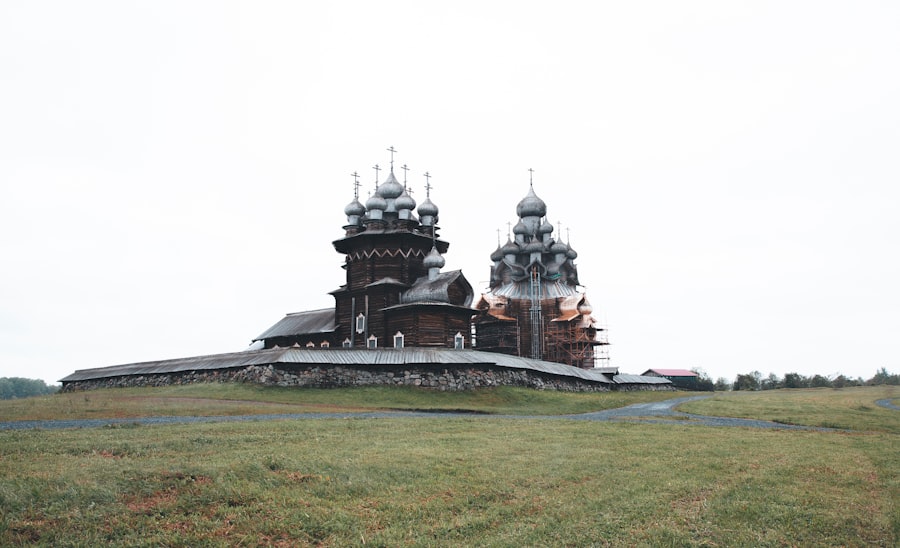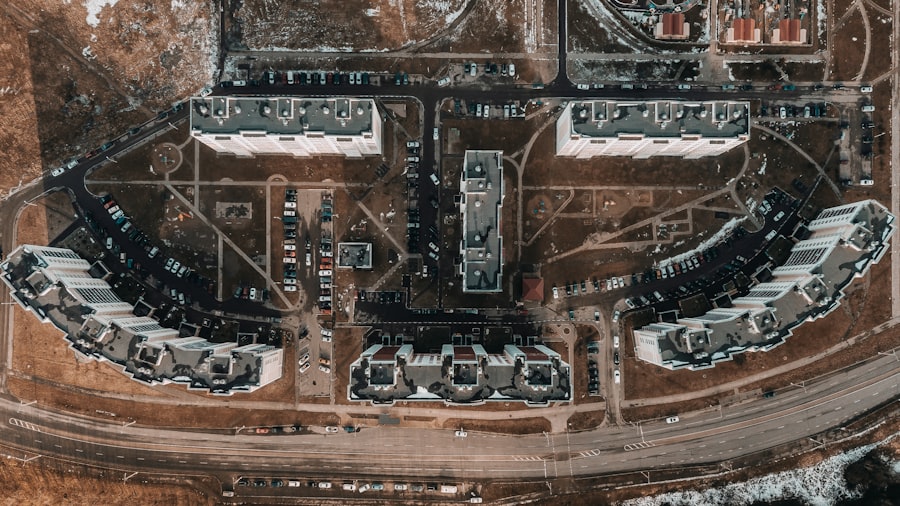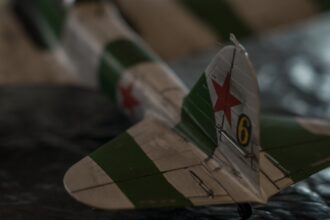The Russian military command structure is a complex and multifaceted system that has evolved over centuries, shaped by historical events, political ideologies, and strategic necessities. At its core, this structure is designed to ensure the effective management and deployment of military resources, personnel, and strategies. The command hierarchy is characterized by a blend of traditional military practices and modern innovations, reflecting Russia’s unique geopolitical landscape and security challenges.
Understanding this command structure is crucial for analyzing the effectiveness of the Russian military, especially in light of recent operational failures that have raised questions about its overall efficacy. The Russian military operates under a centralized command system, where authority is concentrated at the top levels of leadership. This centralization is intended to facilitate swift decision-making and unified action across various branches of the armed forces.
However, it also poses challenges, particularly in terms of adaptability and responsiveness to rapidly changing battlefield conditions. As the world observes Russia’s military engagements, particularly in conflicts such as the ongoing situation in Ukraine, the intricacies of its command structure become increasingly relevant for both military analysts and policymakers.
Key Takeaways
- The Russian military command structure is characterized by a centralized system with a strong emphasis on hierarchy and discipline.
- Recent failures in Russian military operations, such as in Ukraine and Syria, have raised concerns about the effectiveness of the military hierarchy and decision-making process.
- The General Staff plays a crucial role in the Russian military, overseeing strategic planning, intelligence, and operational coordination.
- Political leadership, particularly the President and the Defense Minister, wields significant influence over military decision-making, often shaping strategic objectives and operational priorities.
- The failures in Russian military operations have highlighted the need for potential reforms to address shortcomings in the command structure, including modernization and improved coordination between different branches of the military.
Overview of the Russian military hierarchy
The hierarchy of the Russian military is structured in a way that reflects both historical precedents and contemporary needs. At the apex of this hierarchy is the President of Russia, who serves as the Supreme Commander-in-Chief of the Armed Forces. Below the President is the Minister of Defense, responsible for the overall administration and operational readiness of the military.
This dual leadership model establishes a clear chain of command that extends down through various levels, including the General Staff, military districts, and individual branches such as the Army, Navy, and Air Force. Each military district is further divided into operational commands that oversee specific geographic areas and operational responsibilities. This regional division allows for a more focused approach to military operations, enabling commanders to tailor strategies to local conditions.
However, this structure can also lead to bureaucratic delays and miscommunication between different levels of command. The interplay between these various components creates a dynamic yet often cumbersome military hierarchy that can impact operational effectiveness.
Analysis of recent failures in Russian military operations

Recent military operations conducted by Russia have highlighted significant shortcomings within its command structure. The invasion of Ukraine in 2022 served as a critical case study, revealing issues such as poor logistical planning, inadequate intelligence gathering, and ineffective communication among units. These failures have not only hampered operational success but have also led to substantial losses in personnel and equipment.
Analysts have pointed to a lack of flexibility within the command structure as a key factor contributing to these operational setbacks. Moreover, the reliance on outdated tactics and strategies has further exacerbated these failures. The Russian military’s initial assumptions about a swift victory in Ukraine were based on an overestimation of its capabilities and an underestimation of Ukrainian resistance.
This miscalculation reflects deeper issues within the command hierarchy, where decision-making processes may be overly influenced by political considerations rather than grounded in realistic assessments of military capabilities and battlefield dynamics.
Examination of the role of the General Staff in the Russian military
| Role of the General Staff | Details |
|---|---|
| Strategic Planning | The General Staff is responsible for developing strategic plans for the Russian military. |
| Operational Coordination | It coordinates the operational activities of the Russian armed forces. |
| Intelligence Analysis | The General Staff conducts intelligence analysis to support military decision-making. |
| Logistics Support | It provides logistical support to ensure the readiness of the Russian military. |
| Training and Doctrine | Developing training programs and military doctrines for the Russian armed forces. |
The General Staff plays a pivotal role in shaping Russia’s military strategy and operational planning. Composed of senior officers and experts in various fields, the General Staff is responsible for formulating strategic directives, coordinating joint operations, and overseeing training programs for troops. This body serves as the brain of the military, providing essential guidance to commanders at all levels.
However, its effectiveness has come under scrutiny in light of recent operational failures. One significant challenge facing the General Staff is its ability to adapt to modern warfare’s complexities. The rapid evolution of technology and tactics requires a level of agility that may not be fully realized within a traditionally structured organization.
Additionally, there are concerns about the influence of political leadership on the General Staff’s decision-making processes. When military strategies are overly aligned with political objectives rather than grounded in sound military principles, it can lead to flawed operational planning and execution.
Discussion of the influence of political leadership on military decision-making
Political leadership plays a crucial role in shaping military decision-making within Russia. The close relationship between the Kremlin and the military establishment often results in strategic directives that reflect political priorities rather than purely military considerations. This intertwining can lead to a situation where military leaders feel compelled to align their strategies with the expectations of political leaders, potentially compromising operational effectiveness.
The influence of political leadership can manifest in various ways, from setting ambitious goals for military operations to dictating timelines for achieving those objectives.
This dynamic was evident during the early stages of the Ukraine conflict when rapid advances were expected without adequate preparation or consideration for potential challenges on the ground.
Evaluation of the effectiveness of the Russian military command structure

Evaluating the effectiveness of the Russian military command structure reveals a mixed picture. On one hand, its centralized nature allows for decisive action and unified command during critical operations. The hierarchical organization facilitates clear lines of authority and accountability, which can be advantageous in times of crisis.
However, this same centralization can also stifle innovation and adaptability, leading to rigid responses that may not be suitable for modern warfare. Furthermore, recent operational failures have raised questions about the overall effectiveness of this command structure. The inability to respond effectively to unexpected challenges on the battlefield suggests that there may be systemic issues within the hierarchy that need addressing.
Comparison with other military command structures
When comparing Russia’s military command structure with those of other nations, several key differences emerge. For instance, Western militaries often emphasize decentralized command structures that empower lower-level commanders to make decisions based on real-time battlefield conditions. This approach fosters adaptability and responsiveness, allowing for more effective engagement in dynamic combat environments.
In contrast, Russia’s centralized model can lead to delays in decision-making and a lack of initiative among subordinate commanders. While this structure may provide clarity in terms of authority, it can also create bottlenecks that hinder operational effectiveness. Additionally, Western militaries tend to prioritize joint operations across different branches, promoting collaboration and integration that enhances overall combat capability.
In contrast, Russia’s hierarchical approach may limit inter-service cooperation and coordination.
Impact of the failures on Russia’s military capabilities
The failures observed in recent Russian military operations have had significant repercussions for its overall capabilities. Losses in personnel and equipment during engagements have not only diminished immediate combat effectiveness but have also raised concerns about long-term sustainability. The inability to achieve strategic objectives has led to questions about morale within the ranks and confidence in leadership.
Moreover, these failures have implications for Russia’s standing on the global stage. As other nations observe Russia’s struggles in conflict zones like Ukraine, there may be shifts in perceptions regarding its military prowess. This erosion of confidence could impact Russia’s ability to project power internationally and deter potential adversaries from challenging its interests.
Potential reforms to address the shortcomings in the Russian military command structure
Addressing the shortcomings within Russia’s military command structure will require comprehensive reforms aimed at enhancing flexibility, adaptability, and responsiveness. One potential avenue for reform involves decentralizing decision-making authority to empower lower-level commanders with greater autonomy on the battlefield. This shift could foster innovation and allow for more effective responses to rapidly changing conditions.
Additionally, integrating modern technologies into training programs and operational planning could enhance situational awareness and improve decision-making processes. Emphasizing joint operations across different branches would also promote collaboration and coordination, ultimately leading to more effective combat capabilities. Such reforms would necessitate a cultural shift within the military establishment, moving away from rigid hierarchies toward a more dynamic approach that values initiative and adaptability.
Implications for Russia’s national security and defense strategy
The implications of recent failures within Russia’s military command structure extend beyond immediate operational concerns; they also raise critical questions about national security and defense strategy. A weakened military capability could limit Russia’s ability to project power regionally and globally, potentially emboldening adversaries who perceive an opportunity to challenge Russian interests. Furthermore, as Russia grapples with internal challenges stemming from these failures, there may be increased pressure on political leadership to reassess defense priorities and strategies.
This reassessment could lead to shifts in resource allocation or changes in foreign policy approaches as Russia seeks to restore confidence in its military capabilities.
Conclusion and future outlook for the Russian military command structure
In conclusion, the Russian military command structure is characterized by a complex interplay between centralized authority and operational challenges that have become increasingly evident in recent conflicts. While its hierarchical organization provides clarity in command, it also presents significant obstacles to adaptability and responsiveness in modern warfare. The failures observed during recent operations underscore the need for comprehensive reforms aimed at enhancing flexibility and integrating modern practices into training and operational planning.
Looking ahead, the future outlook for Russia’s military command structure will depend on its ability to learn from past mistakes and implement necessary changes. As geopolitical dynamics continue to evolve, Russia must adapt its defense strategies to remain competitive on the global stage while addressing internal shortcomings that threaten its national security interests. The path forward will require a delicate balance between maintaining centralized control while fostering an environment that encourages initiative and innovation among its military leaders.
In recent discussions about the challenges faced by the Russian military, the issue of command structure failure has been a focal point. This topic is explored in depth in a related article on the evolving dynamics within military hierarchies. For a comprehensive analysis, you can read more about these developments in the article available at




